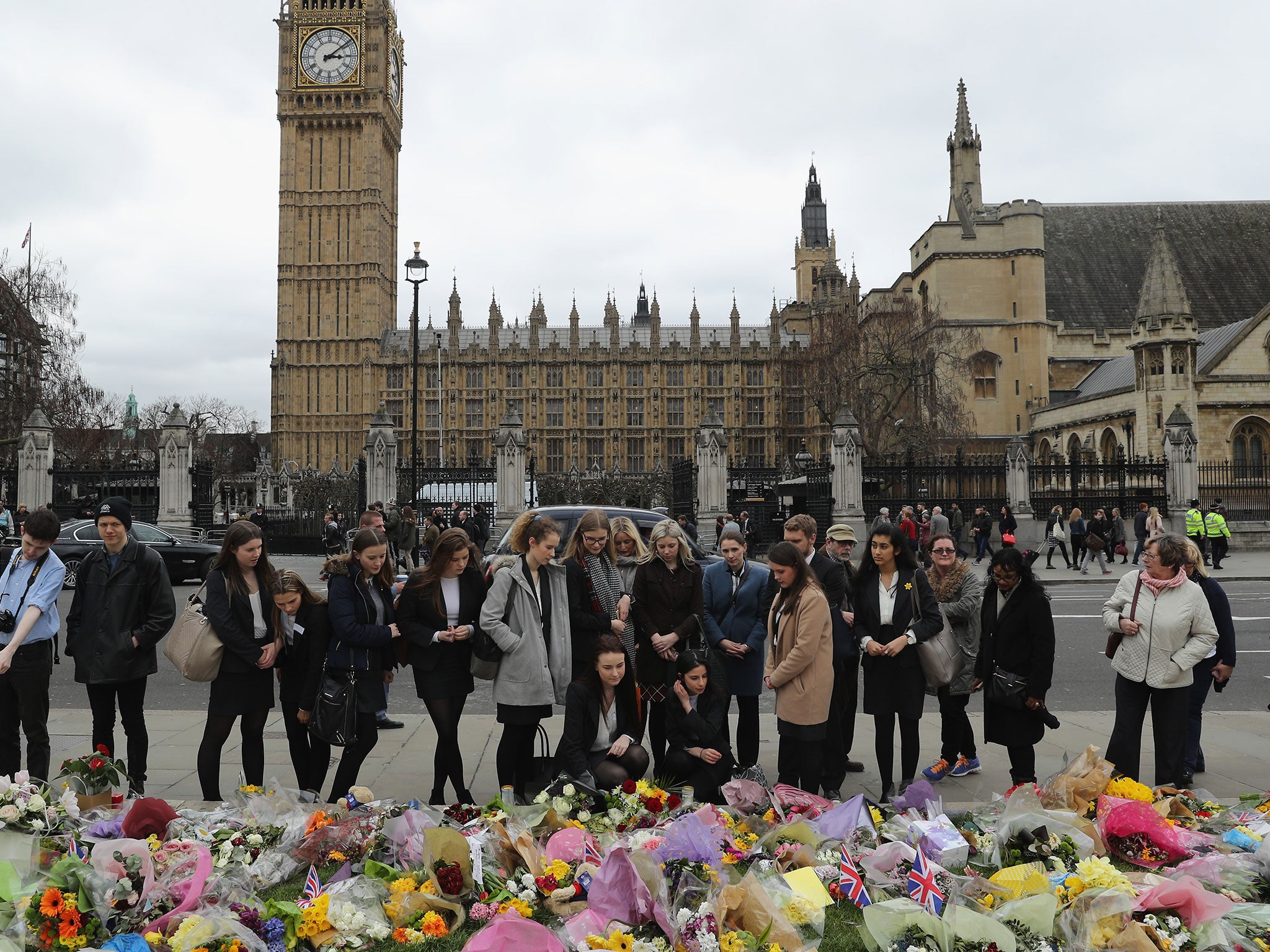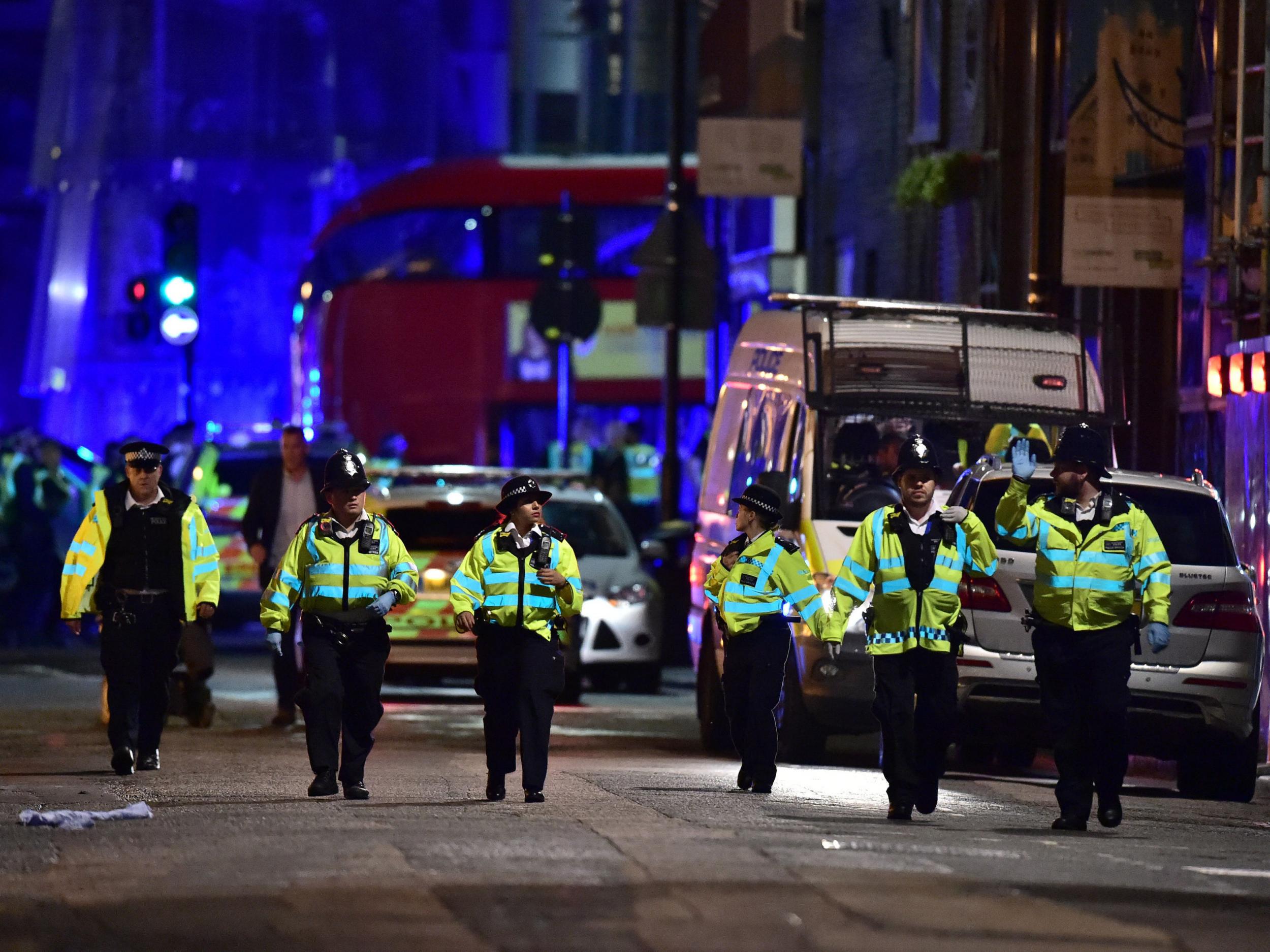The six months of terror that shook Britain in 2017
Security services admitted the ‘bar was lowered’ for terrorists after Britain was struck by one atrocity after another, writes

Until 2017, the UK had been relatively insulated from the wave of Isis-inspired terror attacks sweeping through Europe.
We watched with horror as massacres hit France, Belgium and Germany, seeing people indiscriminately mowed down by the use of guns, bombs, vehicles and knives with horrifying frequency.
The deadliest attacks, which killed 130 victims in Paris in November 2015, had been carried out by battle-hardened jihadis who returned from Syria disguised as refugees.
Earlier that same year, 30 British tourists were shot dead during an Isis-claimed attack on beach resorts in Tunisia.
There was hope that the English Channel might provide some protection from Isis returnees, and that Britain’s tight gun laws would prevent extremists accessing the type of weapons that had wreaked so much devastation in Sousse and Paris.
Even for journalists covering the attacks, there was a sense that the threat came from beyond Europe’s borders, or at least from the continental mainland.
But when Isis’s call for global attacks on “disbelievers” was finally enacted in the UK, the threat came from within.
Shortly before 3pm on 22 March 2017, reports of gunshots near parliament started spreading on social media, as well as witness accounts of a car crash on Westminster Bridge.
Police would only initially confirm a “firearms incident” was ongoing, but within an hour investigators confirmed that the incident was being treated as a terror attack. Six people, including PC Keith Palmer and his attacker, died as a result of the incident, and around 50 others were injured, some of them severely.
An ambulance arrived in Parliament Square at 3.20pm, before any of the deaths had been officially announced, but the air ambulance sitting on the grass next to countless police vehicles and ambulances showed the gravity of what had occurred.
The mood at the cordon, where a strange mixture of journalists, visitors and passing Londoners mulled around quietly waiting for news, was one of shock and disbelief.
Many witnesses were tourists, including an American couple I interviewed who had emerged from Westminster Tube station during the attack and took shelter behind concrete blocks as police opened fire.
Like many onlookers, a bus driver who was driving over the bridge as the attack unfolded described how be initially thought the driver had lost control.
“But then I heard shouting and screaming,” Michael Adamou told me. “In the beginning it looked like an accident, I was hoping it was an accident.”
The subsequent police investigation and inquests showed how deliberate Khalid Masood’s attack was, how he had considered using gas canisters to cause an explosion before settling on using a car and knife as weapons.
In a pattern that would repeat over the next few months, it emerged that Masood was known to security services as an Islamist extremist and had links with Anjem Choudary’s banned al-Muhajiroun network.
Giving evidence at inquests into the attack, an MI5 agent claimed the decision to grade Masood as a low risk to national security had been “sound”, adding: “There simply wasn’t enough intelligence for us to work on that would have allowed us to identify his plot and work with the police to frustrate it.”
They also failed to spot the plot mounted by Salman Abedi, who had been travelling back and forth to the Libyan war from Manchester.
Another former MI5 “subject of interest”, he was able to kill 22 people in a suicide bombing days after arriving back in the UK in May 2017.
The target of the blast was particularly cruel – the area where parents were gathering at the Manchester Arena to meet their children leaving an Ariana Grande concert packed with teenage fans.
Isis claimed the attack yet again, issuing a statement celebrating the death and injury of “crusaders” at the “shameless” concert.
Initial fears that the bomber or bombers could be at large raised the UK terror threat level to “critical”, seeing thousands of soldiers and armed police flood the streets.
Despite the show of force, yet another attack struck just 12 days later.
I was in a bar on Borough High Street on Saturday 3 June 2017, celebrating a colleague’s birthday.
The first news of the attack came through a BBC breaking news alert that pinged on our phones at 10.30pm, reporting that a van had hit pedestrians on London Bridge. I volunteered to call the newsdesk and go to investigate.

Until I walked outside, I thought the crash might be an accident, understandably misinterpreted and overblown on social media after two recent attacks.
But the scene that greeted me on Borough High Street quickly destroyed that hope. People were flooding down the road away from London Bridge, while ambulances and police vehicles sped in the opposite direction and helicopters hovered overhead.
Police were pushing a cordon ever further down the road, and appeared unsettled even as reinforcements arrived.
I got permission from officers to broadcast a Facebook live video for The Independent, but several other bystanders were also filming despite being asked to leave.
As we were pushed further away from the scene, a female police officer running down the road shouted at a man who appeared to smile when he was told to move.
“This is not a joke, it’s not a laughing matter and it’s not something to be recorded. People have died,” she told him, as her voice cracked.
The broadcast was less than an hour after the attack started, and long before the eight victims’ deaths – or those of the three attackers – were officially confirmed.
At the time, I did not know that three terrorists had been moving down Borough High Street towards where I was celebrating my friend’s birthday, stabbing anyone within reach.
Later, I would sit through the gruelling inquests watching CCTV clips of the victims’ last movements, thinking how it could have been me.
Ringleader Khuram Butt was being actively monitored by MI5 for attack planning at the time, and had been a known extremist in Choudary’s circles for years, but they failed to spot the plan once again.
One of the millions of people who watched coverage of the attack was Darren Osborne, an unemployed father from Cardiff.
Just over two weeks later, he hired a van, drove it to north London and ploughed into Muslim worshippers leaving mosques in Finsbury Park.
Osborne had gorged on far-right material after watching a documentary on grooming gangs, then became incensed by the Isis-inspired attacks in Westminster, Manchester and London Bridge.
“I’ve done my job, you can kill me now,” he told the survivors who detained him. “At least I had a proper go.”
And his attack was not the end to the horrors of 2017. On 15 September, a homemade bomb partially detonated on a packed District Line train in Parsons Green.
It had been left there by Iraqi refugee Ahmed Hassan, who had been trained as an Isis child soldier in his home country and harboured support for the group despite receiving a warm welcome in the UK.
If his device had functioned as intended, it would have most likely destroyed the entire train carriage and everyone in it.
Despite confessing in an asylum interview that he had been “trained to kill” by Isis, MI5 chose not to investigate him, and he apparently managed to swindle Prevent officials who believed they were guarding against potential radicalisation.
The succession of attacks in Britain in 2017, not seen since the IRA bombing campaigns of the Troubles, layered trauma upon trauma for victims, their families, the emergency services and entire nation.
The security services later admitted that “the bar had been lowered” for terror attacks, allowing unconnected extremists to be inspired into action by each other’s atrocities.
Last October, counterterror police chief Neil Basu admitted the speed of low-technology lone attack plots inspired by Isis had made them harder to detect.
“Despite thinking that our biggest threat was returning foreign fighters, it wasn’t – the threat was already here,” he said.
Police hailed their success in foiling 24 plots – 16 Islamist and eight right wing – since the Westminster attack as 2018 stretched into 2019 without further bloodshed.
At the start of November, security services downgraded the UK terror threat level because of “positive developments in reducing the threat from terrorism”.
But last month’s stabbing in London Bridge was a brutal wake-up call over the continued threat.
Police will be hoping that Usman Khan’s act of barbarism against the people who were trying to improve his life will not inspire another deadly domino effect.
Join our commenting forum
Join thought-provoking conversations, follow other Independent readers and see their replies
Comments